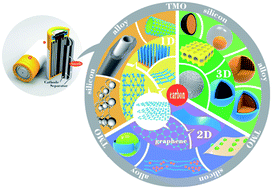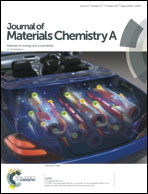Nanostructured anode materials for lithium-ion batteries: principle, recent progress and future perspectives
Abstract
As the most commonly used potential energy conversion and storage devices, lithium-ion batteries (LIBs) have been extensively investigated for a wide range of fields including information technology, electric and hybrid vehicles, aerospace, etc. Endowed with attractive properties such as high energy density, long cycle life, small size, low weight, few memory effects and low pollution, LIBs have been recognized as the most likely approach to be used to store electrical power in the future. This review will start with a brief introduction to charge–discharge principles and performance assessment indices. The advantages and disadvantages of several commonly studied anode materials including carbon, alloys, transition metal oxides and silicon along with lithium intercalation will be reviewed. The mechanism and synthesis methods, followed by strategies to enhance battery performance by virtue of interesting structural designs will be examined. Finally, a few issues needing further exploration will be discussed followed by a brief outline of the prospects and outlook for the LIB field.

- This article is part of the themed collection: Recent Review Articles


 Please wait while we load your content...
Please wait while we load your content...